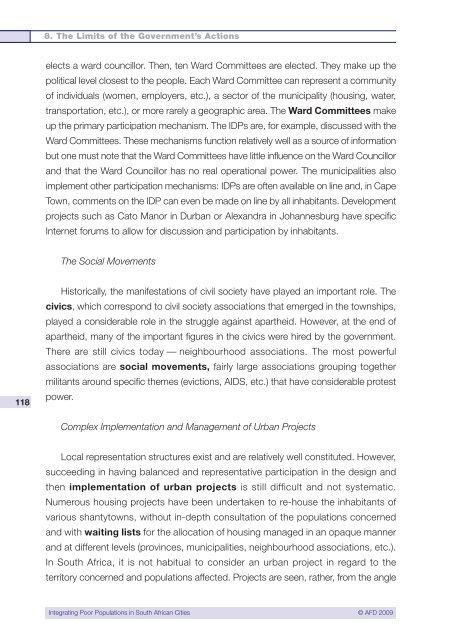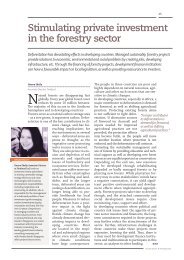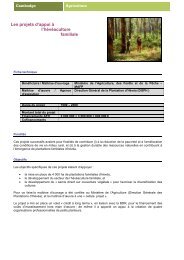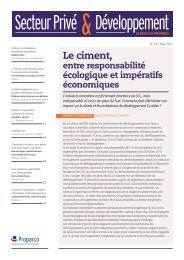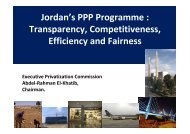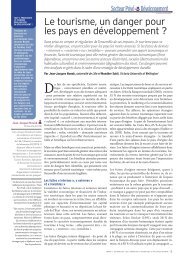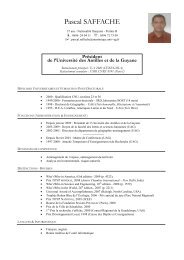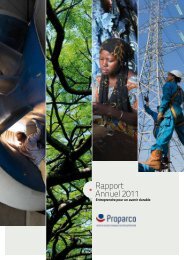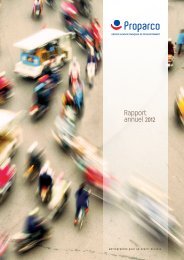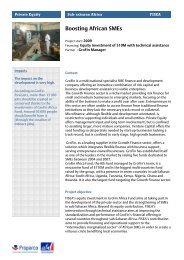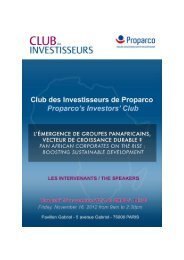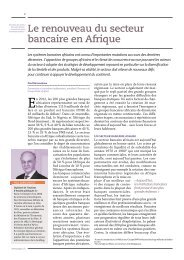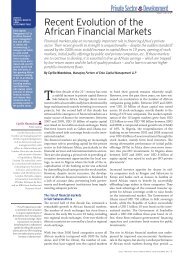Integrating Poor Populations in South African Cities - Agence ...
Integrating Poor Populations in South African Cities - Agence ...
Integrating Poor Populations in South African Cities - Agence ...
Create successful ePaper yourself
Turn your PDF publications into a flip-book with our unique Google optimized e-Paper software.
8. The Limits of the Government’s Actions<br />
elects a ward councillor. Then, ten Ward Committees are elected. They make up the<br />
political level closest to the people. Each Ward Committee can represent a community<br />
of <strong>in</strong>dividuals (women, employers, etc.), a sector of the municipality (hous<strong>in</strong>g, water,<br />
transportation, etc.), or more rarely a geographic area. The Ward Committees make<br />
up the primary participation mechanism. The IDPs are, for example, discussed with the<br />
Ward Committees. These mechanisms function relatively well as a source of <strong>in</strong>formation<br />
but one must note that the Ward Committees have little <strong>in</strong>fluence on the Ward Councillor<br />
and that the Ward Councillor has no real operational power. The municipalities also<br />
implement other participation mechanisms: IDPs are often available on l<strong>in</strong>e and, <strong>in</strong> Cape<br />
Town, comments on the IDP can even be made on l<strong>in</strong>e by all <strong>in</strong>habitants. Development<br />
projects such as Cato Manor <strong>in</strong> Durban or Alexandra <strong>in</strong> Johannesburg have specific<br />
Internet forums to allow for discussion and participation by <strong>in</strong>habitants.<br />
The Social Movements<br />
118<br />
Historically, the manifestations of civil society have played an important role. The<br />
civics, which correspond to civil society associations that emerged <strong>in</strong> the townships,<br />
played a considerable role <strong>in</strong> the struggle aga<strong>in</strong>st apartheid. However, at the end of<br />
apartheid, many of the important figures <strong>in</strong> the civics were hired by the government.<br />
There are still civics today — neighbourhood associations. The most powerful<br />
associations are social movements, fairly large associations group<strong>in</strong>g together<br />
militants around specific themes (evictions, AIDS, etc.) that have considerable protest<br />
power.<br />
Complex Implementation and Management of Urban Projects<br />
Local representation structures exist and are relatively well constituted. However,<br />
succeed<strong>in</strong>g <strong>in</strong> hav<strong>in</strong>g balanced and representative participation <strong>in</strong> the design and<br />
then implementation of urban projects is still difficult and not systematic.<br />
Numerous hous<strong>in</strong>g projects have been undertaken to re-house the <strong>in</strong>habitants of<br />
various shantytowns, without <strong>in</strong>-depth consultation of the populations concerned<br />
and with wait<strong>in</strong>g lists for the allocation of hous<strong>in</strong>g managed <strong>in</strong> an opaque manner<br />
and at different levels (prov<strong>in</strong>ces, municipalities, neighbourhood associations, etc.).<br />
In <strong>South</strong> Africa, it is not habitual to consider an urban project <strong>in</strong> regard to the<br />
territory concerned and populations affected. Projects are seen, rather, from the angle<br />
<strong>Integrat<strong>in</strong>g</strong> <strong>Poor</strong> <strong>Populations</strong> <strong>in</strong> <strong>South</strong> <strong>African</strong> <strong>Cities</strong> © AFD 2009


